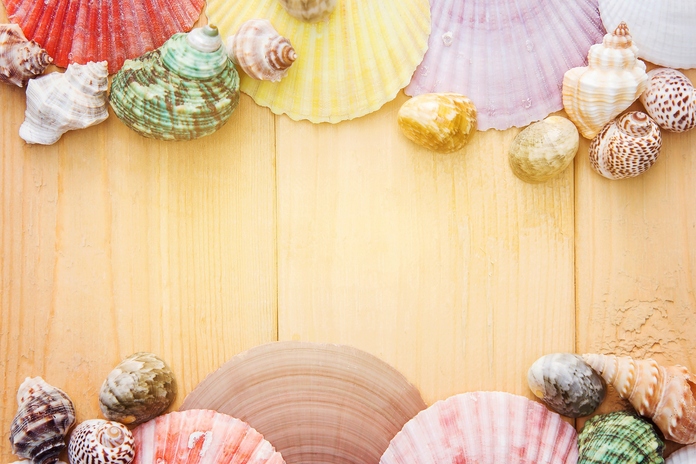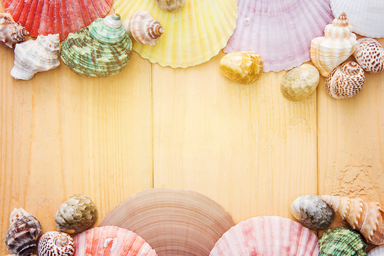Don’t get me wrong, I love a good 30-minute run as much as anyone, but there are so many ways to exercise in the summer that don’t involve pounding your feet on the pavement.
Let’s try switching up your exercise routine with some of these activities that feel less like a workout and are more about enjoying the great outdoors.
Her Campus spoke with fitness expert Kelli Calabrese about the awesome benefits of these exercises and how to get started!
*Calories based on 30 minutes of activity, for a 130 lb individual. Calculations from Everydayhealth.com
Pedal Pushers
*Biking at 10 mph burns about 175 calories
Biking is a perfect example of a calorie-burner where you decide how hard you want to work. For a low-impact, casual exercise, grab a group of friends and instead of driving to your favorite summer hot spot, bike there. It can be a nice change of pace to the usual car ride, plus you’ll be enjoying the sun and getting a workout in the process!
It is also a great way to be environmentally conscious. Biking, not driving, to a friend’s house or your summer job can save money on gas and get you in shape.
For those of you looking for a real workout, grab a bike and head out for a bit of a longer ride. Unlike running, biking isn’t quite so hard on your knees so you’ll probably be able to bike much farther than you can run.
When biking on the road, there are lots of safety precautions to consider.
“Wear padded shorts, have reflective gear on your bike and your clothing, ride with a group for visibility, obey traffic laws, signal when turning, wear sunglasses and sun screen, and be visible to cars at all times,” says Calabrese.
Don’t forget the number one safety tip: wear a helmet!
According to Calabrese, cycling works quadriceps, lower back, and hamstrings. It can also improve your heart and lung efficiency, and reduce your risk of cardiovascular and other metabolic diseases.
“Cycling is primarily an exercise that challenges the cardiovascular system, but take one look at Lance Armstrong and there is no doubt that just about every major muscle group in his body is engaged during a bike ride,” says Calabrese.
If you like the woods, or would rather be a bit more shaded than on the sweltering blacktop of a road, mountain biking could be just the thing for you. Riding over all those hills, rocks, and roots can give you quite the thigh burn. It’s a bit more difficult than riding on pavement, so make sure you’re ready for an intense workout.
According to Calabrese, the best places to cycle are on the shoulder of a road during low traffic hours, a rural area, or an area without too many stoplights, stop signs, or pedestrian traffic.
If you are just beginning cycling, Calabrese recommends choosing the area wisely.
“It’s important to build up confidence and have as few distractions as possible,” she says. “Consider a more remote area with roads that are newer or free of debris and pot holes.”
Check out bikeride.com for cycling events in your area.
[pagebreak]
Just Keep Swimming
*Burns about 175 calories
Two words: Michael Phelps. Swimming might seem like a leisurely activity, but it can work muscles you never knew you had.
“Swimming is fantastic for the heart and lungs as well as the core endurance,” says Calabrese. “[It] is one of the most challenging activities because you need to learn to time your breathing, and is a total body exercise which gets your heart rate up very fast.”
It may be easy on the joints, but swimming also gives you a total body workout. You’re using your legs to propel, while your arms and upper body are working hard at the same time.
Before swimming, Calabrese recommends warming up your shoulders and stretching your chest and lower back. “Swimming slowly for about five minutes is also a good idea as your body adjusts to breathing while your face is in and out of the water,” she says.
To start swimming as an exercise, Calabrese suggests starting out slow to build up your confidence and endurance.
“You may want to use a kick board and work on strengthening your legs first,” she says.
Swimming, obviously, can be done in any lake, river, ocean, pool, you name it. If you’re looking to keep track of how far you’ve gone, a pool may be best. In a 25-yard pool, 33 laps (down and back) is one mile.
“[In a pool] you can time yourself and strive to beat your own time per lap(s),” says Calabrese.
If there’s no pool nearby, any body of water will do.
Before you begin swimming, make sure you know the basics and how much swimming your body can handle. If you’re swimming in a large body of water, don’t swim straight out only to realize that halfway across the lake, you’re exhausted (where are the cute lifeguards when you need them?).
The great thing about swimming is that you’re in water, so you won’t be as hot and sweaty when you finish exercising. Since you’re not sweating as much, you may not feel thirsty after a workout. Don’t let your body fool you, though. You still need to drink water!
So next time you’re lounging by the water with friends, take the opportunity to burn a few extra calories rather than just laying there!
[pagebreak]
Rock It
*Burns about 324 calories
If you’re looking for that ultimate arm and upper body toner, rock climbing is it—not to mention it’s a mega calorie burner.
“Rock climbing works everything from the fingers to the toes,” says Calabrese. “It requires extraordinary upper back, shoulder, and hamstring strength.”
Rock climbing can be done inside on an artificial rock wall (with the safety of a matted floor below you), or outside on a rock face. If you’d rather climb in the fresh air, there’s no need to attempt the highest peak in your area the first (or any) time. You can climb at any level to get the fitness benefits. If you want to climb for 30 minutes, but don’t want to go too high, there’s always the option of climbing horizontally across the rock.
Climbing is just as much of a mental challenge as well it is a physical one. There’s planning involved to decide where to place your hands and feet next. Until you find that perfect ledge for your right foot, you may be gripping a surface with your left hand – a sure upper back workout and endurance test.
“The benefits of [climbing] are a muscle-endurance building exercise as well as an adrenaline rush as you ascend the rock,” says Calabrese.
Rock climbing is a sport that should only be attempted with proper instructions and equipment. Make sure your first time climbing is either at an indoor rock climbing wall, or overseen by a professional. Calabrese also recommends always climbing with a friend and investigating the difficulty of the climb before you start.
Check out rockclimbing.com for information about climbing areas all over the world.
[pagebreak]
Skater Girl:
*Burns 368 calories
It’s not as ‘80s grandma as you think—no, seriously. The Kardashians and Victoria’s Secret model Alessandra Ambrosio do it, so it has to have some body benefits.
Not to be confused with roller skating (four wheels: two in front, two in back), inline skating (four wheels in a straight line) is a bit more sporty and can be used as a form of exercise.
Inline skating can pack as much (or more) cardio and calorie-burning benefits as running, but without that knee and foot pounding bone and joint damages. You can inline skate anywhere from a sidewalk or park to an indoor rink.
“This is a cardiovascular exercise that also builds muscle endurance,” says Calabrese. “You can cover a lot of terrain, and it’s a great way to see new territory or see familiar territory from a new perspective.”
The side-to-side movement and the need to balance on a line of four wheels works your inner thighs, calves, and butt as well as your abs—sounds like the perfect summer bathing suit-bound activity to me. Just don’t wear a scrunchi or leg warmers.
When beginning rollerblading, “get properly fitted for skates. The wrong skates will cause blisters, stress the muscles in your feet and, long term, can create problems with your feet,” says Calabrese. In addition, wear a properly fitted helmet, wrist guards, elbow and knee pads in case of a fall.
Before you start skating, Calabrese suggests doing stretches for the quads, hamstrings, and lower back. “Once your skates are on, begin slowly for about five minutes before picking up speed,” she says.
Check out iisa.org for places to skate and where to buy equipment.
[pagebreak]
Paddle Away:
*Burns 147 calories
Kayaking or canoeing is an awesome upper body workout (and a great way to enjoy the water and the scenery!).
“This is a great exercise for the shoulders, upper back, lower back, abdominals, obliques, and the arms,” says Calabrese. “It is cardiovascular and helps to build up upper body endurance.”
Even if you’re just slowly meandering down a river, paddling works your back, arms, and abs. The nice thing about being in a boat: you can also take a break from paddling and simply let the current pull you along.
Perfect for a vacation, a date, or with friends, kayaks and canoes can hold more than one person (depending on the boat you use). Although if you’re looking for a solitary exercise activity, paddling alone down a river or in a lake can be quite peaceful and relaxing.
Before you begin, Calabrese recommends taking a course in water safety, “so you know what to do to prevent an emergency as well as what to do if one occurs.” Also, have a life jacket on board, wear sunscreen, and choose waters that are relatively calm for your first time.
Check out kayakonline.com for more info about places to kayak and how to choose the right boat.
Whatever activity you choose, you’ll reap amazing fitness and cardiovascular benefits while enjoying the outdoors—an awesome way to spend those gorgeous summer days!
Sources
Kelli Calabrese, Fitness Expert
http://paddling.about.com/od/technique/a/paddling_exerci.htm
http://www.everydayhealth.com
http://www.skateline.com.sg/article/view/The-Benefits-of-Skating-20080605.rails

